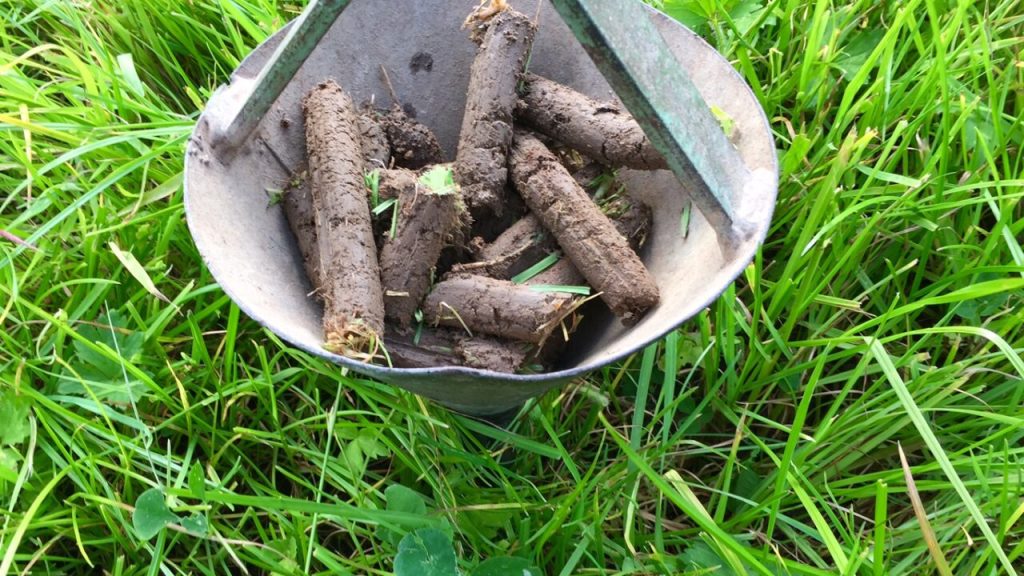Soil analysis
Soil Sampling: more important now than ever before?
Soil provides plants with essential minerals and nutrients and their presence at optimal levels is a critical part of successful agriculture. Knowing the quality of your soil, and understanding how to improve it, is the most important thing you can do to guarantee good growing conditions for crops.
Soil sampling can provide useful information about the chemical, biological, and physical conditions of your soil. The main principle of soil analysis is to determine the nutrient status of a given area and measure the available nutrients in the soil. Soil testing can save on fertiliser costs by identifying the areas of land which have low soil fertility and are in the most need of extra fertiliser. Knowing this information allows you to tailor your rates of fertiliser application to the specific needs of the soil.
Under the current Nitrates Action Plan, soil sampling is mandatory for all farms with a stocking rate over 130kgs N/ha since January 2023. If no soil samples are taken then it is assumed a Phosphorous index 4 for any farmer over 130kgs N/ha, which prohibits the use of any fertilizers containing P and the import of organic fertilizers. Soil sampling is also now mandatory for all tillage ground from 1st January 2023.
If a farm is less than 130kgs N/ha grassland stocking rate the previous year and no soil analysis has been completed, then you can use index 3 for Phosphorous. If you buy these products, without having soil samples in place, then you will face penalties and more inspections.
The ideal time to soil sample is from October to February, and samples should be taken three months after the last application of slurry, chemical phosphorous or potassium.

Soil Sampling 10 point plan
- Do not sample a field until at least 3 months after the last application of P and K and 2 years after the last application of lime.
- Use a suitable soil corer and take cores to the correct sampling depth of 10cm (4”), this is where your grass roots are getting their nutrients from.
- Take a full core every time right down to the 10 cm, do not pick off the top or you will get an incorrect reading, particularly for Phosphorous as it is immobile and tends to stay in the top few centimeters of soil.
- Take a sample from 2- 4ha at most. To ensure the sample is representative, sample by walking in a W shaped pattern across the sampling area.
- Take a minimum of 20 soil cores, mix them together, and take a representative sub-sample for analysis, making sure the soil sample bag is full.
- Avoid any unusual spots such as old fences, ditches, drinking troughs, gateways, dung or urine patches or where fertilizer/manures or lime has been heaped or spilled in the past.
- Take into account the previous cropping history. Sample grazing fields separate to silage fields as they are treated differently. Sample tillage fields separately and allow for soil type, slope, drainage, or persistent poor yields.
- Sample fields at the same time of the year to aid comparisons of soil sample results. Avoid sampling under extremes of soil conditions e.g. waterlogged or very dry soils.
- Place the soil sample in a sealed plastic sample bag to avoid contamination. Write the field name and number on the sample bag with permanent marker. The field name is important for you as when you get the results back the field name will be on it. When you pick up the result today or in three years’ time you know exactly where it’s from, you won’t need a map which will undoubtedly get lost. Also when resampling in four years it’s easier to compare samples. If you use an LPIS number this may change.
- Repeat samples every 3-4 years to see if the actions you are taking to correct soil fertility are working. Derogation farmers must take a soil sample every 4 years from a maximum area of 5 ha.
Soil Fertility
- Approximately 90% of the soils sampled in Ireland are lacking in either phosphorus (P), potassium (K) or lime, limiting their production potential.
- Low soil fertility equates to a loss of more than 2.0t grass DM/ha/year, which is worth €275/ha/year.
- Better soil fertility will support increased production, improve farm income, and enhance environmental performance on the farm.
- Correcting soil fertility can allow growth for 25% more grass. Fertiliser losses can contribute to your farm’s greenhouse gas emissions and impact on water and air quality.
- Improving soil fertility through nutrient management can also have environmental benefits. If nutrients are applied where they are most needed on the farm, they will be more readily absorbed by the soil preventing losses to the air and water.
- A tailored nutrient management plan & improving soil fertility can reduce greenhouse gas emissions and increase carbon sequestration in soils.
How to take a soil sample
get in touch
To find out more on soil analysis or to arrange a test, please contact a member of the agri team
